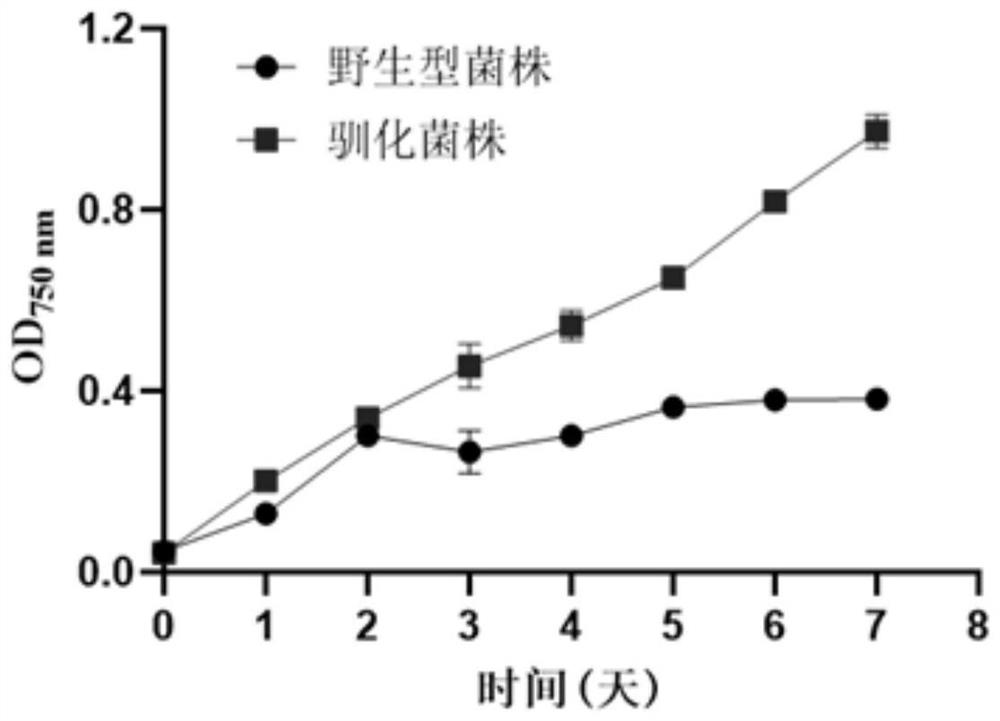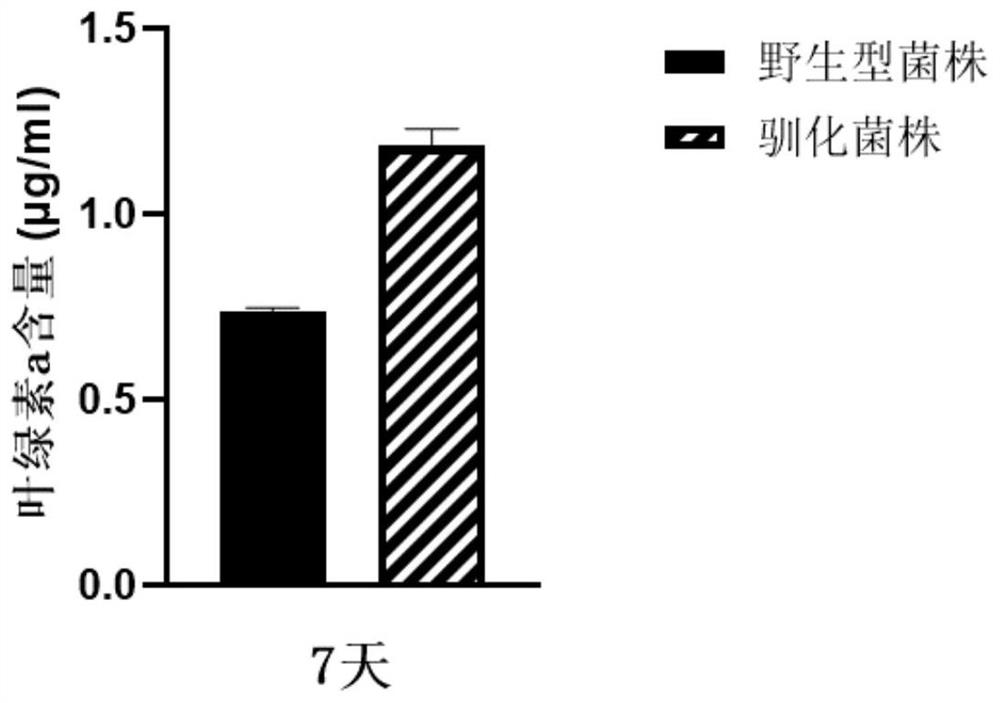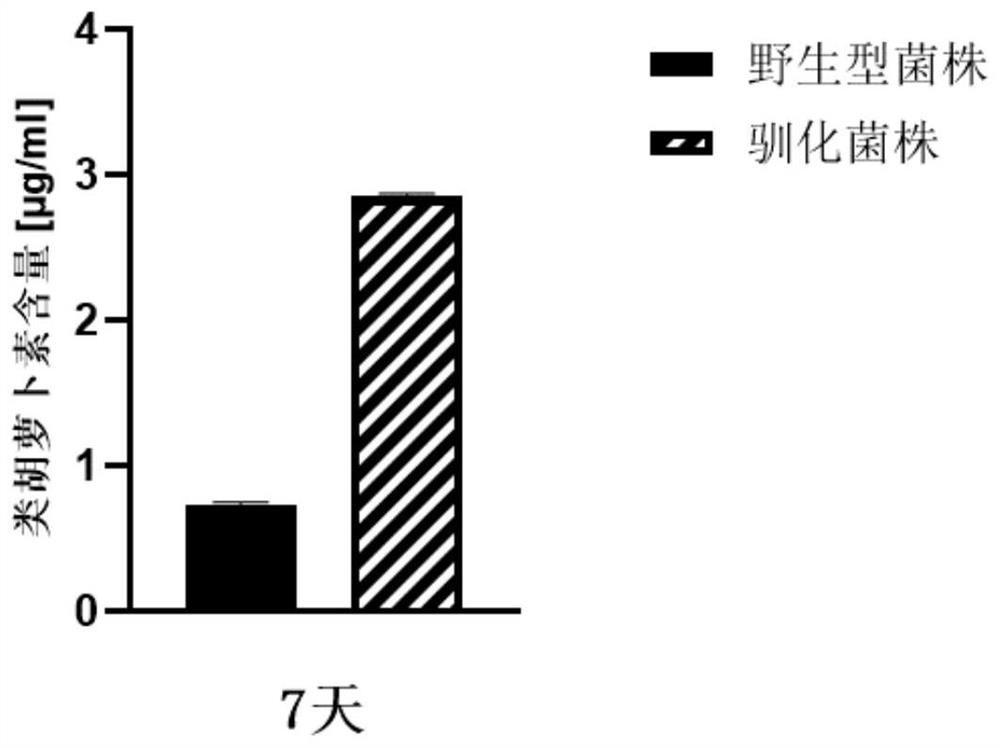Domestication method of synechocystis domestication strain capable of tolerating high light intensity
A Synechocystis, tolerance technology, applied in the field of domestication of Synechocystis domesticated strains, can solve problems such as cell damage and reduced photosynthetic efficiency
- Summary
- Abstract
- Description
- Claims
- Application Information
AI Technical Summary
Problems solved by technology
Method used
Image
Examples
Embodiment 1
[0025] A method for domestication of a Synechocystis domesticated strain capable of tolerant to high light intensity, comprising the following steps:
[0026] (1) Determine the initial sensitive light intensity of the wild-type Synechocystis strain through an in vitro sensitivity experiment; the specific steps are: inoculate the wild-type bacterial liquid of Synechocystis (Synchocystis PCC 6803 bacterial liquid) in 25 mL of liquid BG11 medium to make the enzyme Determination of OD 750nm is 0.04 at 50-2000 μmol photons m -2 s -1 Under light conditions (respectively: 50, 100, and then take 100 as a gradient, to 2000 μmol photons m -2 s -1 ) Cultivate the wild-type strain of Synechocystis, and determine that the initial sensitive light intensity of the wild-type Synechocystis is 100 μmol photons m -2 s -1 ;
[0027] (2) Inoculate Synechocystis wild-type bacterial solution in 25mL liquid BG11 medium to measure OD with a microplate reader 750nm is 0.04 at 100 μmol photons m ...
PUM
| Property | Measurement | Unit |
|---|---|---|
| strength | aaaaa | aaaaa |
Abstract
Description
Claims
Application Information
 Login to View More
Login to View More - R&D
- Intellectual Property
- Life Sciences
- Materials
- Tech Scout
- Unparalleled Data Quality
- Higher Quality Content
- 60% Fewer Hallucinations
Browse by: Latest US Patents, China's latest patents, Technical Efficacy Thesaurus, Application Domain, Technology Topic, Popular Technical Reports.
© 2025 PatSnap. All rights reserved.Legal|Privacy policy|Modern Slavery Act Transparency Statement|Sitemap|About US| Contact US: help@patsnap.com



